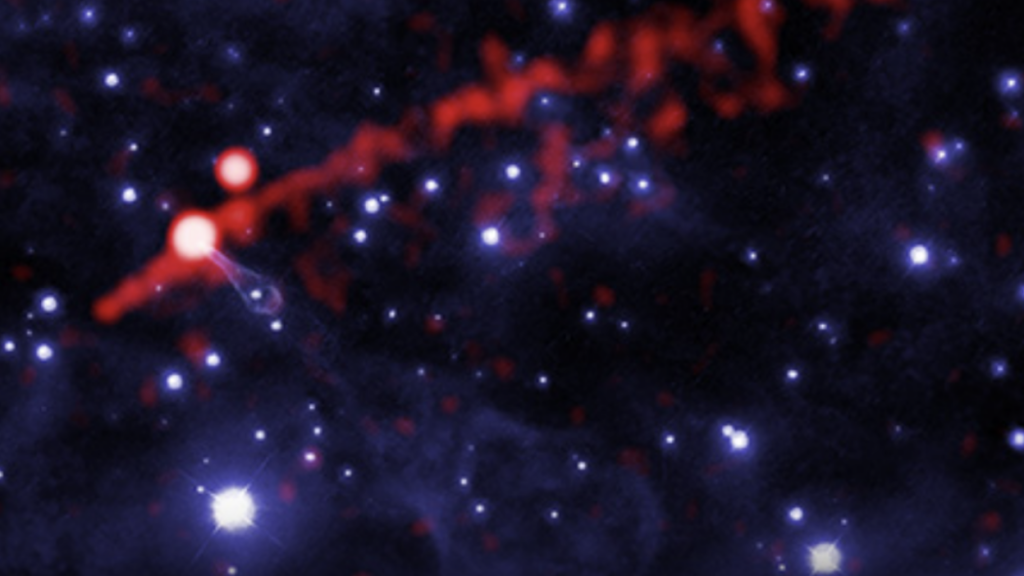A rapidly spinning, profoundly dense object is blasting a “flame-like” beam into space.
It’s a type of neutron star — the remnants of a collapsed, exploded star so dense that just a sugar cube-sized piece of this extremely compact material weighs 1 billion tons — called a “pulsar.” That’s because the star shoots out “pulses” of energy at regular intervals (kind of like a cosmic lighthouse). Astronomers have used NASA’s Chandra X-ray Observatory and other instruments to watch this pulsar’s behavior for over two decades, and it shows a vibrant interstellar scene.
“Normally found only in heavy metal bands or certain post-apocalyptic films, a ‘flame-throwing guitar’ has now been spotted moving through space,” the space agency said in a statement.
Why a “flame-throwing guitar”?
As the image and clip below show, the fast-spinning pulsar, formally named “pulsar PSR B2224+65,” is blasting out a 12-trillion-mile-long beam of energized particles and energy, which is colored reddish-orange. But that’s not all. Beneath the pulsar is a colossal guitar-shaped cloud, made of hydrogen gas. This cloud, called a nebula, formed when particles shooting out from the pulsar blew gaseous bubbles over eons, ultimately amassing into the great cloud.
“The guitar shape is undeniable, and is traced by a thin white line in the labeled composite image,” NASA wrote. It’s located some 2,700 light-years from Earth in the constellation Cepheus.

Credit: X-ray: NASA / CXC / Stanford Univ. / M. de Vries et al.; Optical: (Hubble) NASA / ESA / STScI and (Palomar) Hale Telescope / Palomar / CalTech; Illustrated outline: NASA / CXC / K. DiVona; Image Processing: NASA / CXC / SAO / L. Frattare
Pulsars make themselves known to us by the two jets of energized particles emanating from their poles (which are produced by the particles rapidly moving around the neutron stars’ potent magnetic fields). From our vantage point many light-years away, these beams of light can pulse in seconds or even milliseconds. The fastest known pulsars spin at some 716 times per second.
Sometimes, two neutron stars collide, a dramatic event that can produce the most enigmatic object in the universe — a black hole, a realm so gravitationally powerful, not even light can escape.
It’s a wild universe out there.
Topics
NASA

